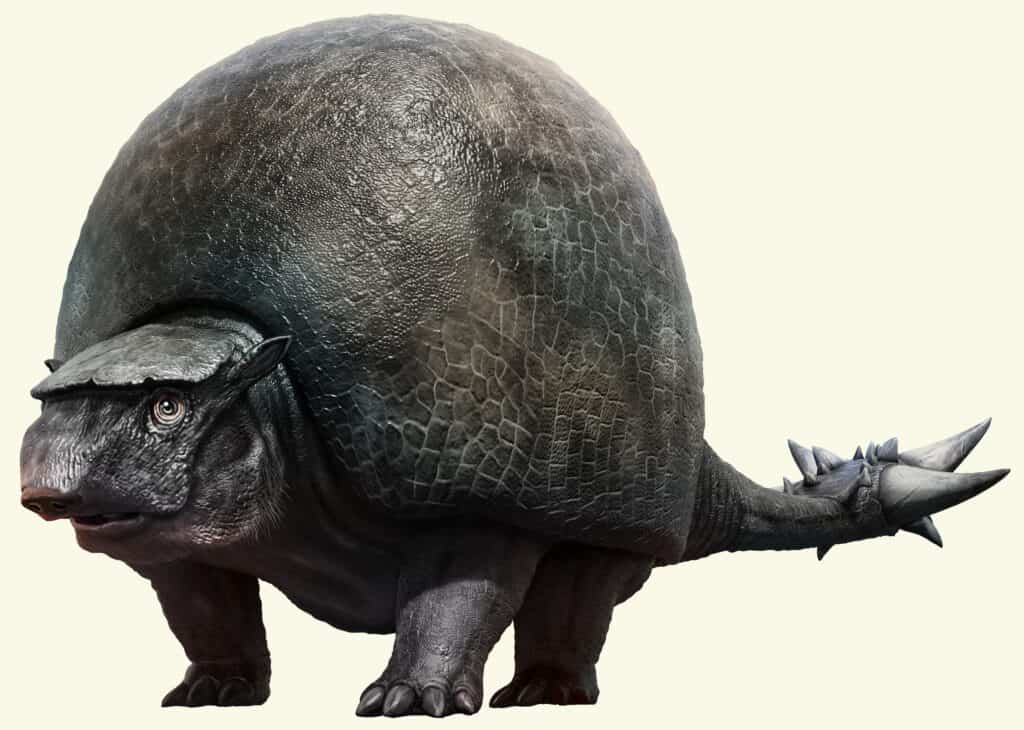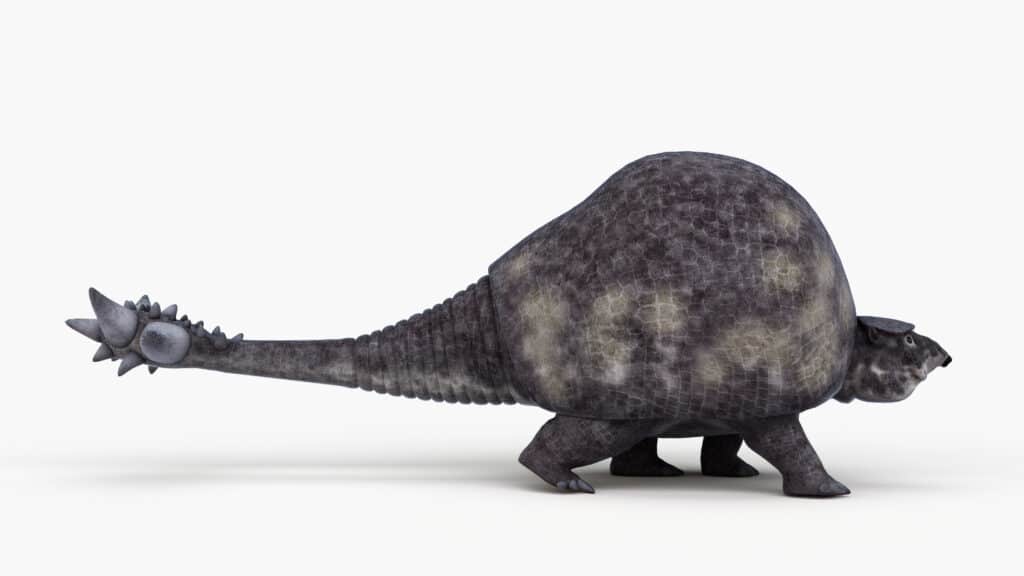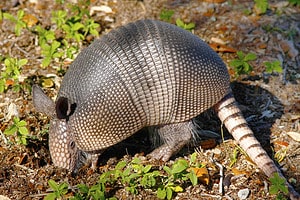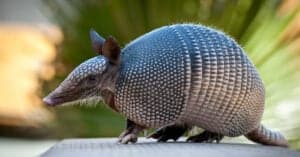Over the years, even before humans came to exist and dominate the world, millions of animal species lived. Although many of these species are now extinct, some of them still exist, just in differently evolved versions of their ancestors. One such animal is the armadillo, which has managed to thrive over millions of years. The armadillo is characterized by its hard shell, making it look like an armored truck, protecting it against predators and other natural disasters. The armored shell consists of overlapping scales known as scutes. The protein keratin, which is also present in hair and nails, is what forms the scales on these animals. Evidence indicates that this keratin is simply modified skin that evolved for protective defense.
Their name is derived from a Spanish word that means “little armored one,” a testimony to not just their protective shell but also their size. The largest armadillo species weighs around 120 pounds and is as long as 59 inches, but many other species are under that size, making the armadillo a relatively small animal. However, there was an ancient species that weighed as much as 2.5 tons. Unbelievable, right? In this article, you will discover more facts about these giant armadillos.
Meet the Doedicurus

The Doedicurus was over four feet tall and longer than 12 feet.
©Warpaint/Shutterstock.com
The Doedicurus is an extinct species of armored armadillos that belonged to a group referred to as glyptodonts. Their name is derived from Greek, which in Ancient Greek meant “club-tailed” or “pestle-tailed,” as a reference to their spiked tails. These animals were identifiable by their huge shells and clubbed tails that had spikes around them, which they used to chase off predators. Although it might seem like the only difference between these ancient armadillos and the ones currently existing is the clubbed tail with spikes, there is also a very obvious difference in their size.
According to fossil records, this armadillo was over four feet tall and longer than 12 feet. Apart from its incredible dimensions, it also weighed a lot. It had an average weight of over 3,000 pounds. However, according to experts, it is believed that these creatures grew some more before they went extinct; the last specimens of this species could have weighed as much as 4,190 to 5,220 pounds.
The other notable feature of these animals, the spiked tails, were also huge, weighing between 88 to 143 pounds. These tails could swing at opponents at tremendous speeds of up to 25 miles per hour and were also long, measuring over three feet.
Doedicurus Distribution and Habitat
Based on expert opinion, these animals were believed to have been particular to parts of South America. They existed during the Pleistocene epoch and are believed to have lived in a relatively cold region of northeastern Patagonia. This area was thought to have experienced cold, humid weather cycles with periods of both warmth and cold known as glacial and interglacial periods. They are also believed to have inhabited the woodlands, rainforests, and savannas that existed at the time.
Also, the Doedicurus was possibly the last-surviving glyptodont, with the final species dying out around 8,000 to 7,000 years ago during the middle Holocene period. British Paleontologist Richard Owen published the first description of the Doedicurus in 1847. It was the 5th glyptodont species described at the time. The fossil was a partial tail showing the massive club. Initially, Owen assigned the new species to the Glyptodon genus. However, in 1874, the animal got classified into its own genus.
Diet: What Did the Doedicurus Eat?

Doedicurus ate multicellular organisms like algae or low-growing plants and grasses.
©SciePro/Shutterstock.com
The Doedicurus was a herbivore, a grazer that ate multicellular organisms like algae or low-growing plants and grasses. However, the fossils of their dentition left behind made it obvious to experts that these animals had a slow metabolism. Like most other glyptodonts, these animals had hypsodont dentition and teeth that never stopped growing throughout their life. This indicates that they had teeth with high crowns and enamel that protruded beyond the gum line, providing the teeth with adequate space for wear and tear. They also had cheek teeth with no distinct canines and incisors. Because of the absence of these teeth, there is a wide gap in their jaws that is instead covered in small grinding surfaces, making it hard for them to chew their food completely.
Also, because of the animal’s hard shell and spiked tail, it was almost impossible for it to be prey to most other predatory animals. At the time these animals existed, the predators that shared habitats with them were not strong enough to have cause them significant harm. The Doedicurus had what it took to become an apex predator. Still, experts believe that they were not bothered about hunting smaller animals because of their incomplete teeth and slow metabolism.
Doedicurus vs. Modern Armadillos
As mentioned above, the primary difference between these two species is their size. While the Doedicurus was huge and weighed over 3,000 pounds (experts believe they even weighed up to 5,000 pounds), modern armadillos do not weigh that much. The average armadillo’s weight depends on its species, with the smallest armadillo species being the pink fairy armadillo, which is barely inches long. On the other hand, the giant armadillo is the largest species, measuring an astonishing 59 inches and weighing 120 pounds.
Another difference between both is their distribution. The Doedicurus was only found in a part of South America, but modern armadillos, although not found everywhere in the world, can be found in Central America and South America. It is also believed that there are a few species that can be found in some parts of the United States as these animals continue to migrate northward.
Up Next:
An Armadillo This Big Shouldn’t Be Able To Run So Fast
These Gigantic Ancient Hyenas Weighed Over 600lbs And Hunted Rhinos
The photo featured at the top of this post is © SciePro/Shutterstock.com
Sources
- , Available here: https://www.thoughtco.com/doedicurus-pestle-tail-1093197
- , Available here: https://cpb-eu-w2.wpmucdn.com/blogs.city.ac.uk/dist/9/2679/files/2020/06/Doedicurus.pdf
- , Available here: https://www.dododex.com/taming/doedicurus
Thank you for reading! Have some feedback for us? Contact the AZ Animals editorial team.






